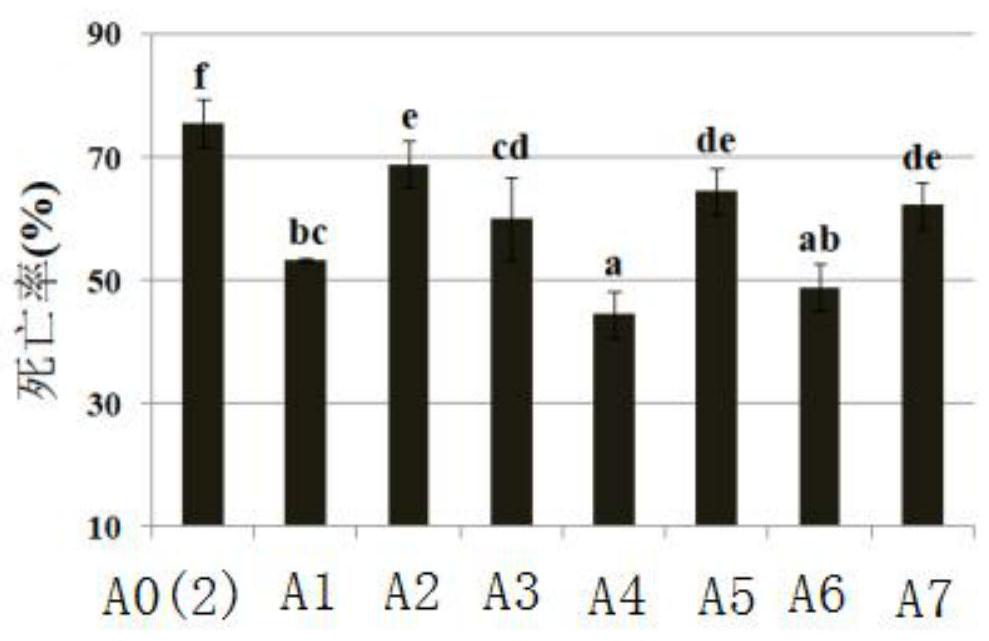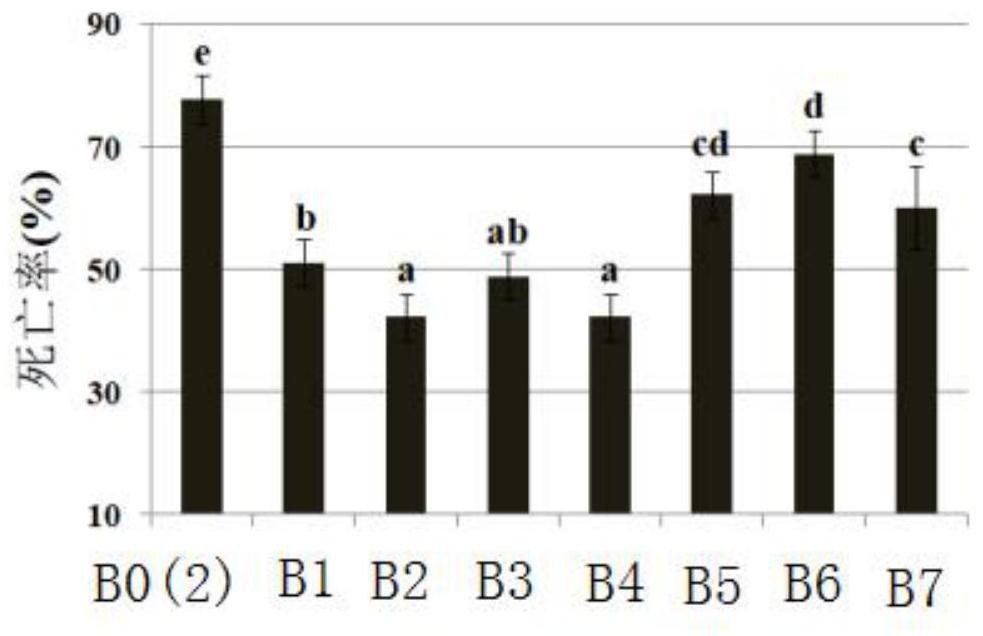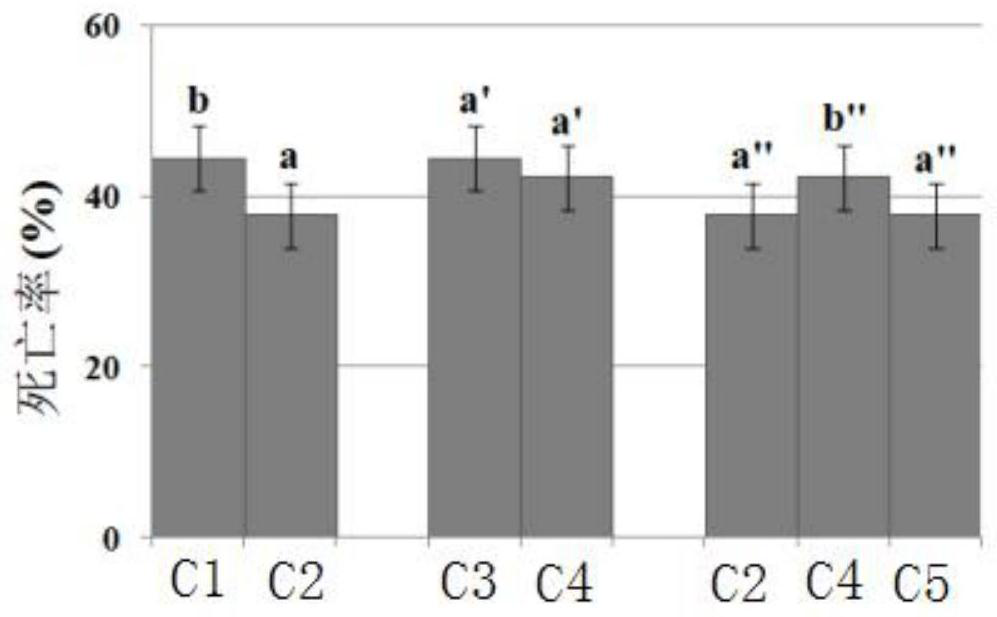Natural compound anti-aeromonas-hydrophila agent, natural feed and preparation method thereof
A natural technology of Aeromonas hydrophila, applied in antibacterial drugs, animal feed, animal feed, etc., can solve the problem of limited utilization of leftovers
- Summary
- Abstract
- Description
- Claims
- Application Information
AI Technical Summary
Problems solved by technology
Method used
Image
Examples
Embodiment 1
[0057] Embodiment 1: Preparation of natural product anti-fish Aeromonas hydrophila infection feed
[0058] 1) Add the 6 kinds of extracts to the oil at the concentration of 1g / kg (referring to add one kind of extract per kg of basic feed) respectively in the following table 1, mix them evenly and add them to the basic feed to make the corresponding 8 kinds of extracts The feed pellets are identified as A0, A1, A2, A3, A4, A5, A6, A7, respectively.
[0059] Table 1
[0060] Additives A0 A1 A2 A3 A4 A5 A6 A7 Pomegranate Peel Ethanol Extract × × Turmeric Ethanol Extract × × Eucommia Ethanol Extract × × Ethanol Extract of Myrobalan × × Plum Ethanol Extract × × Scutellaria baicalensis ethanol extract × ×
[0061] in FIG. 1:
[0062] A0 refers to the basal feed without any extract added. In the following examples, A0 takes two copies, which are r...
Embodiment 2
[0093] The purchased crucian carp fry were raised in the breeding room for one week, and 405 crucian carp fry with an equivalent weight were selected and randomly divided into 9 treatment groups, each with 3 repeated fish tanks. The shape, size and color of each fish tank are the same, the size is 30×30×40cm and a built-in 800L / h flow aerator. The water in the fish tank takes potable tap water as the water source, and the water volume in the tank is 30L. The temperature of the breeding room was controlled at 22±1°C, and the aerator continued to supply oxygen. Give 9 treatment groups and feed respectively in embodiment 1 marked as " A0 (1) ", " A0 (2) ", " A1 ", " A2 ", " A3 ", " A4 ", " A5 ", " A6 " and "A7" feed, fed 4 times a day. After 7 days of feeding, the feeding was stopped for 1 day and the challenge experiment was carried out.
[0094] Intraperitoneal injection was used in the challenge experiment. The number of crucian carp in each tank is 15. Fish fed with "A0(1)...
Embodiment 3
[0102] The purchased crucian carp fry were raised in the breeding room for one week, and 405 crucian carp fry with an equivalent weight were selected and randomly divided into 9 treatment groups, each with 3 repeated fish tanks. The shape, size and color of each fish tank are the same, the size is 30×30×40cm and a built-in 800L / h flow aerator. The water in the fish tank takes potable tap water as the water source, and the water volume in the tank is 30L. The temperature of the breeding room was controlled at 22±1°C, and the aerator continued to supply oxygen. Give 9 treatment groups and feed respectively in embodiment 1 marked as " B0 (1) ", " B0 (2) ", " B1 ", " B2 ", " B3 ", " B4 ", " B5 ", " B6 " and "B7" feed, fed 4 times a day. After 7 days of feeding, the feeding was stopped for 1 day and the challenge experiment was carried out.
[0103] Intraperitoneal injection was used in the challenge experiment. The number of crucian carp in each tank is 15. The fish fed with ...
PUM
 Login to View More
Login to View More Abstract
Description
Claims
Application Information
 Login to View More
Login to View More - R&D
- Intellectual Property
- Life Sciences
- Materials
- Tech Scout
- Unparalleled Data Quality
- Higher Quality Content
- 60% Fewer Hallucinations
Browse by: Latest US Patents, China's latest patents, Technical Efficacy Thesaurus, Application Domain, Technology Topic, Popular Technical Reports.
© 2025 PatSnap. All rights reserved.Legal|Privacy policy|Modern Slavery Act Transparency Statement|Sitemap|About US| Contact US: help@patsnap.com



